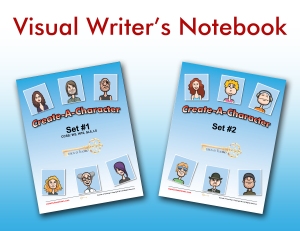Students who consistently earn advanced proficient writing scores have one thing in common: They know how to add the kind of details to their stories that satisfy readers.
Fortunately, most of the techniques they use are easy to teach.
Here are eight elaboration strategies I share with students to help them add effective details to narrative pieces:
#1 Add action verbs.
Action verbs—such as gripped, slumped, trudged, glared, and perched—bring boring sentences to life. Too often, young writers are content using weaker versions of these verbs (i.e. held, sat, walked, looked, and stood). Find practice prompts (with standards included) that require students to use strong verbs here.
#2 Use transitions.
Transitional words—such as because, eventually, when, before, and after—belong in all writing genres. They are signposts designed to guide readers into a deeper understanding of the text. Download a list of narrative transitions here.
#3 Add unexpected numbers.
Precise numbers—such as 10:03 PM, 96 degrees, or 81mph—add authenticity to writings. Readers expect an event to start at 8:00 or to learn that a driver is speeding or to be told it’s hot outside—so surprise them by using very specific numbers that will pop off the page and pull them into the scene instead. Find practice prompts (with standards included) that require students to use specific times here.
#4 Include proper nouns.
Names and places—such as Dexter Sweeny, Tiffany Chappelle, Rockville Middle School, and Piccadilly Drive—conjure up images in readers’ minds. Keep readers engaged by teasing them with names and places that will make them curious enough to want to confirm or negate their “first impressions” (e.g. Is Dexter Sweeny rich and spoiled or geeky and intelligent?). Download a sample lesson here. Read the full blog post on the power of proper nouns here.
#5 Use repetition for effect.
Repetition of single words—such as No light. No sound. No movement.—adds rhythm, emphasis, and drama to narratives. Once in a while it’s fun to take control of readers’ emotions before revealing a conflict, a motive, or a consequence. Repeating words or phrases (usually in sets of three) is an effective way to build suspense just before revealing something significant. Find examples here.
#6 Include thought shots.
Thought shots—thoughts that reveal fears, plans, reactions, worries, and joys—allow readers to understand the things that influence characters’ decisions. Find 50 free practice prompts (with standards included) that require students to create thought shots here.
#7 Use emphatic word fragments.
An emphatic word fragment—such as “Regrets. We all have them.”—is a rule-breaking strategy used by many contemporary writers. The use of a single word (usually a noun) followed by a period, forces readers to pay attention to all the sentences that support it. Learn more about emphatic words and phrases here.
#8 Include texture words.
Texture words—such as icy, gritty, varnished, damp, and slippery—are among the most frequently overlooked descriptive words. Think about it. Most writers include sights and sounds. Many add familiar scents and comfort foods. But textures? They are often the forgotten members of the five-senses family. Get a list of 400 texture words here.
Additional elaboration techniques—such as (1) Creating Believable Protagonists and Antagonists, (2) Designing Novel-Worthy Character Names, (3) Developing Irresistible Personalities, (4) Using Nouns and Verb Combos to Develop Writing Fluency and (5) Turning Broad Adjectives into Active Verb Phrases—are available here.
Share Point: Now, here’s a question for you: What is one easy writing strategy your students use to add interest to their narrative writings?
Until next time…stay committed…teach with passion…and inspire students with who you are.
About the author: Janice Malone is a teacher, seminar leader and owner of ELA Seminars. Visit her website www.ELAseminars.com, or check out the 100’s of free lessons she has posted on Pinterest http://pinterest.com/elaseminars/.




Thank you. Great post. I struggle to teach writing because there are no “rules”. Thank you for some rules. One thing I’ve learned is to have students identify the first word of each sentence. It helps them avoid using the same word to start every sentence.
Hello, fabulous post and resources. Just to let you know the resource of narrative transitions no longer exists. Thank you for sharing your great ideas!
Thank you, Rebecca, for letting me know. I have fixed the link.